The sprite of a girl stood half hidden behind the bamboo gate leading to her family home. “Bye bye,” she said, waving and giggling. “Mingalaba,” I replied, using one of only two Burmese words I learned during my tour of Myanmar.
This was not the first time I had felt welcomed during my two week Viking River Myanmar Explorer Cruise and tour. We were repeatedly invited into local homes; made an impromptu stop at a wedding reception, where the bride’s mother invited us to enjoy pink ice cream; and descended unannounced upon a temple in a tiny village, where a new golden umbrella was being installed on the top of a pagoda. Though we were the subject of some curiosity, we were always met with a combination of sweet shyness and broad smiles.
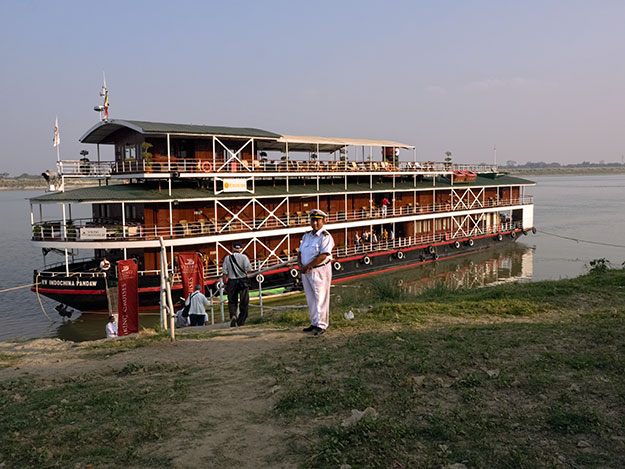
Undoubtedly, I would have come away with the same impression of the people of Myanmar had I been on my own, especially since I spent an additional 10 days traveling independently following the Viking River tour. However the depth of knowledge I gained with Viking was nothing less than astounding. Having been raised in Bagan, the cultural and artistic center of Myanmar, and endowed with a degree in English, our guide Mu Mu was well equipped to answer our questions. And question we did. Every few minutes, someone would call out, “Mu Mu, can you tell us…” Whether she was eating lunch, giving directions to our bus driver, or taking notes about tasks to do for guests, she stopped, listened, and then provided us with deep background about the culture and customs of Myanmar.
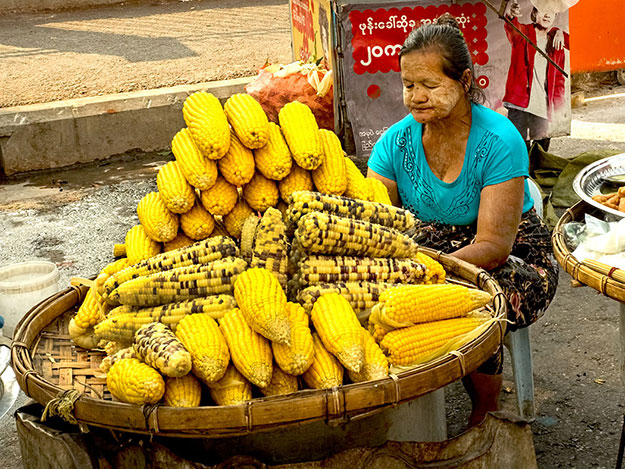
My fascination with Myanmar began the first day, when Mu Mu commented that the falling leaves made her realize how quickly summer was approaching. It took me a second to understand. While I equate falling leaves with the onset of winter, trees in Myanmar drop their foliage when endless days of 100+ degree temperatures parch the land, impairing their ability to suck up moisture. It was the first of many dichotomies that I experienced in this gentle country that has only recently emerged from an oppressive dictatorship.
Archeological evidence suggests that cultures existed in Burma as early as 11,000 BCE, but the earliest recorded inhabitants were the Pyu, a Tibeto-Burman-speaking people who arrived in the second century BCE from the area of present-day Yunan, China. They established city-states throughout the Irrawaddy River Valley that endured for more than a thousand years, until they were gradually absorbed into to the Burman kingdom of Pagan (present-day Bagan) early in the 9th century. Simultaneously, Mon people began to intrude into lower Burma, and by the 13th century, the Shan civilization had surrounded the Burmans to the north and west. Constant infighting between the city-states practically assured the successful invasion by Mongols, who conquered Pagan in 1287.
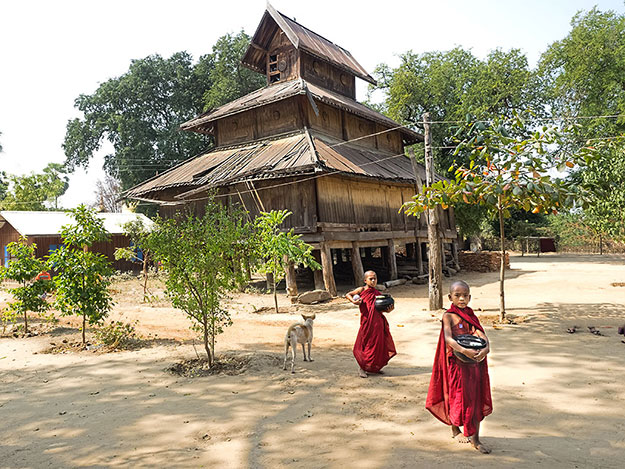
By the time Kublai Khan and his Mongol raiders left Pagan ten years later, Burma had broken up into a series of smaller city-states and princely kingdoms. Wars and shifting alliances marked the next 250 years, until the county was finally reunited as Burma under the Toungoo dynasty in the 16th century. It, in turn, was succeeded by the Konbaung Dynasty in 1752, which created the largest Burmese empire of all. Unfortunately, unification did not mean peace. Burma subsequently fought a series of wars with Siam (Thailand) and China, ultimately losing land to both. By the early 1800’s, Burma was coveting Indian territories controlled by the British, which resulted in the first Anglo-Burmese War. Again, Burma was crushed; the country lost much of their western lands and was forced to pay the equivalent of $5 million in reparations to the British. By 1885, Burma was entirely under British rule and the the last Burmese king and his family were sent to exile in India.

When World War II began, Burmese Major General Aung San appealed to the Japanese to extract them from British rule. Rangoon (present-day Yangon), fell in March 1942 and the Japanese military took charge of the country. By August of the following year, General Aung San had become unhappy with Japanese treatment of Burmese people and no longer believed their promises of independence. In a stunning reversal, he began secret negotiations with the British to oust the Japanese. With Aung San’s help, the Britain liberated Burma in 1945. Three years later, Burma became an independent nation, an event largely attributed to the efforts of the General. Unfortunately, Aung San did not live to see Burma achieve independence, as he and six members of his political team were assassinated in 1947.
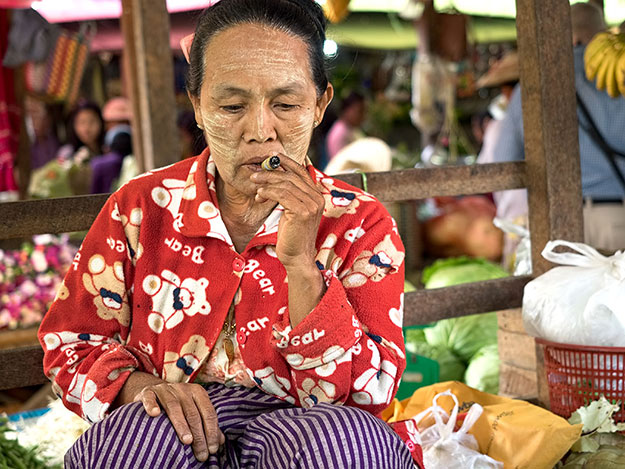
The fledgling Burmese democracy existed for only 14 years. In March of 1962, Army Chief of Staff General Ne Win and sixteen other senior military officers staged a coup d’état and declared Burma to be a socialist state. Under their rule, the name of the country was changed to Myanmar, the capital was changed from Rangoon to Yangon, and traffic was changed from left to right-hand drive. The ensuing 49 years were marked by severe oppression and public unrest, roiled up by Aung San Suu Kyi, the beloved daughter of General Aung San. The military junta did everything possible to silence Suu Kyi, including keeping her under house arrest at her home in Yangon and making it illegal for anyone to display photos of her or her father. Rather than lessening her influence, their actions made her a national hero and a symbol of freedom. When the military voluntarily stepped down in 2011, it was Aung San Suu Kyi that the people turned to. By overwhelming margins, she was elected to Parliament in 2012, and members of her political part swept the majority of the remaining seats.
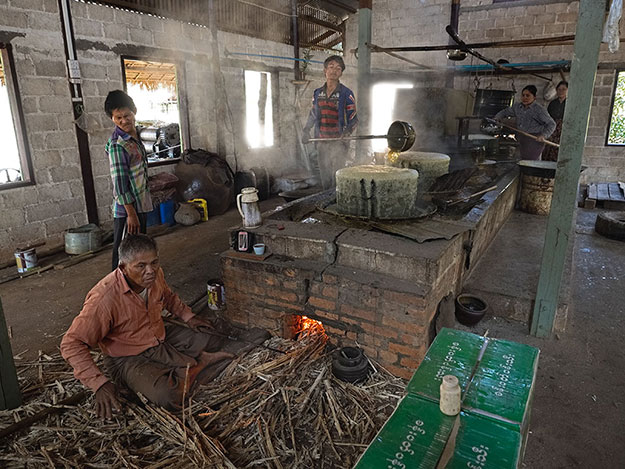
Myanmar people suffered the oppression of the past two centuries with patience and acceptance. “It is because of our Buddhist beliefs and the principle of karma,” Mu Mu explained. “If we are born into poor circumstances, with little opportunity to improve our economic situation, we are willing to accept that this is our karma.” Indeed, in earlier days there was little potential for common folk to rise from poverty. Only two universities existed and competition was fierce, with most positions being awarded to children of high-ranking military officers or members of the small wealthy class.
Today Myanmar has many universities which allow them to boast a 93% literacy rate, but graduates have hardly any prospects. Business and commerce is overwhelmingly controlled by ethnic Chinese, who restrict employment to family from generation to generation. No engineering firms exist to employ engineers, doctors and nurses emerge from medical schools with no practical training due to a dearth of hospitals, and even teachers usually end up returning to their villages, where they may or may not find positions.
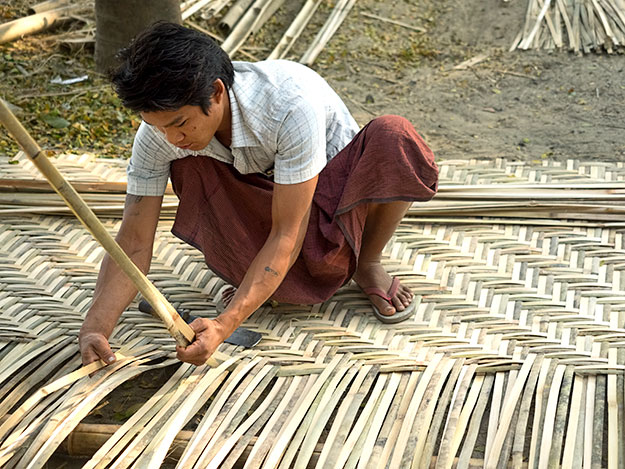
As a result, Myanmar’s newly elected democratic government faces immense challenges. The country is rich in natural resources, but much of it, such as the rubies, sapphires, and jade that are mined in the northern states, is being spirited out of the country by the truckload in order to satisfy insatiable Chinese desire for semi-precious gems. A similar situation exists in the western part of the country, which is rich in natural gas and oil. Rather than enriching government coffers, much of the petroleum income is diverted to private interests.
Seventy percent of the country’s 52 million residents still live in the countryside and many villages do not yet have electricity or access to clean water and sanitation. Most families eek a living from small farms, where they plant, tend, and harvest by hand. Rich soil that is replenished each year by flooding during the rainy season allows them to grow crops up to 10 months each year, rotating between rice, sugar cane, peas, peanuts, chickpeas, onions, mustard, corn, cucumbers, and a myriad of other local fruits and vegetables.
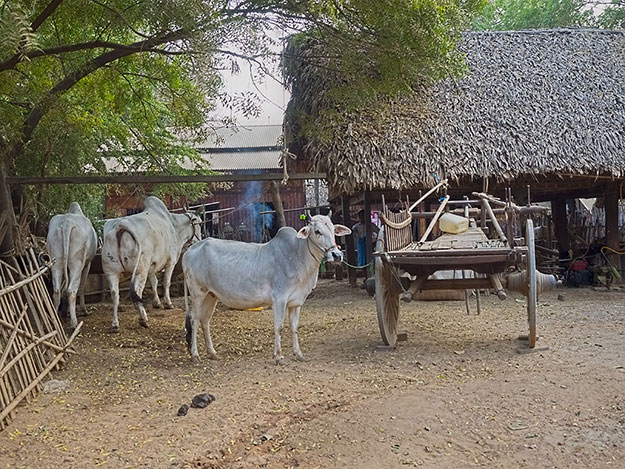
Lakes and rivers provide employment for many, as fishery products are the number one export for the country, however problems loom here as well. Inle Lake, which has long provided a living for thousands who live in wooden houses built upon stilts over the water, is drying up. Because of poor water management and over-fishing, fishermen can no longer catch enough fish to feed their families, much less meet export demands. Climate change is negatively affecting the rivers, where lower water levels means they are navigable fewer months each year, disrupting transport of goods.
Some continue to earn a living from the production of traditional handicrafts. In Yandabo, families dig clay from the banks of the Irrawaddy River to make ceramic pots on giant stone wheels powered by foot. After painstakingly applying designs by hand, the pots are dried and fired in enormous piles of ash and straw. Once cooled, the women carry five at a time down to the river in baskets balanced on their heads. From here they are shipped all over Myanmar for use as water jugs.
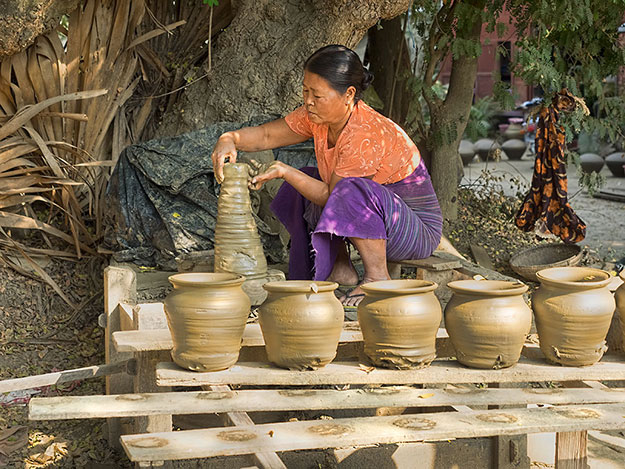
Others produce the gold foil that Buddhists apply to the surface of Buddhist statues. Sweat streaming down their backs, young men wield sledge hammers for hours each day, pounding slivers of gold into ever thinner sheets. Cane farmers sweat over open fires, cooking up the sweet syrupy concoction that becomes sugar cane candy. Those who have no talent for handicrafts pick and pack leaves for the production of cheroots, a hand-rolled cigar smoked by men and women alike. Many open small betel nut shops in front of their homes, selling the addictive nut wrapped in a slake-lime coated Bodhi leaf that is chewed until teeth turn black. From splitting and weaving bamboo into the mats used in construction of homes to the cultivation and selling of flowers for the temples, industrious Myanmar people have always figured out creative ways to exist.
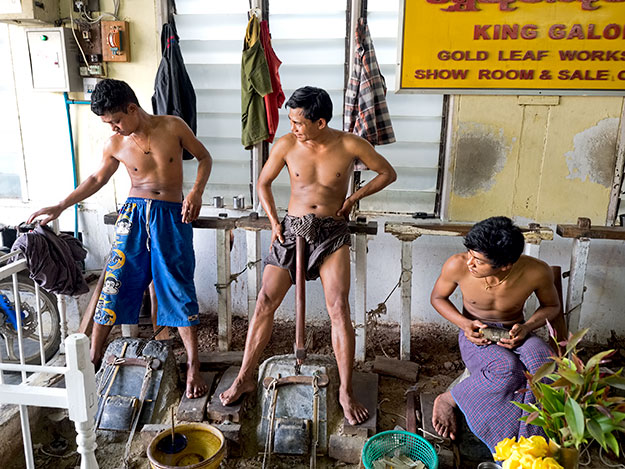
Yet despite having lives that seem incomprehensibly difficult, the people of Myanmar were some of the most fun-loving, gentle, spiritual, and genuinely happy people I have ever met. In part, that may be due to a seeming determination to retain their traditional values. In villages, the traditional long tubes of fabric known as longyis are still worn by everyone. Women continue to paint designs on their cheeks, noses, and foreheads with Thanakha, a cream-colored paste that provides protection from the sun and is regarded as a sign of beauty. Even in the big cities of Yangon and Mandalay, traditional garb is still more prevalent than Western dress.
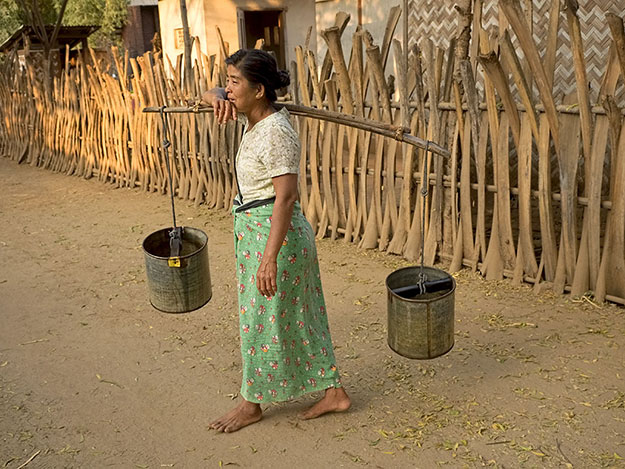
Perhaps more importantly, people are joyous over the election of their heroine, Aung San Suu Kyi, to Parliament. They can once again hang their coveted photos of “The Lady” and her father on their walls without fear of retribution, and subjects that were taboo just a few short years ago are openly being discussed. “It has only been a few years since it was safe to discuss such issues,” Mu Mu said. “Before our eyes were closed, our mouth is closed. I dare not talk about the government like I do now. That is why you will see happier people in Myanmar now. This is thanks to The Lady Aung San Suu Kyi.”
That happiness was most palpable on the second to last night of our cruise, when the crew took a break from attending to our every need to serenade us. They belted out three local songs with such joy and sincerity that it choked me up, but tears were thwarted when they broke out into a raucous medley of American pop-rock songs, complete with Elvis-pelvis moves and moon walking.
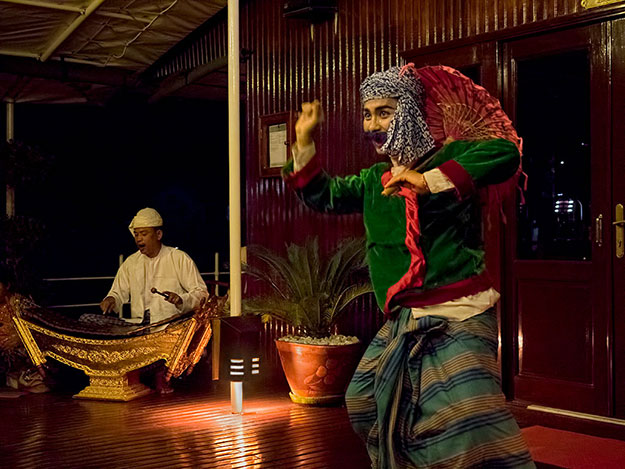
The Viking River Myanmar Explorer was the third cruise I have taken with Viking (read previous reviews about the Waterway of the Tsars in Russia and the Grand European Tour). Both were excellent, but their Myanmar cruise/tour was far and away my favorite of the three. I hated to leave, but my gorgeous teak stateroom was booked to a new passenger. I hardly knew how to express my appreciation as I descended the gangplank, so I said the only other Myanmar word I knew, “je tzu ba,” over and over again, hoping the crew knew that my thank-yous were truly heartfelt.
Author’s note: Viking conducted their first tour of Myanmar just two years ago, when locals were still afraid of foreigners. Mu Mu explained: “Because of our history, people of Myanmar knew only two types of foreigners, British and Japanese. In 2014, the first Viking Cruise took groups to remote villages and all the locals, wide eyed, said “The British are coming.”” As tourism becomes more prevalent, this innocence is fading, though, thankfully, the graciousness of Myanmar’s people has not been impacted. However things are changing rapidly, and I highly recommend visiting Myanmar sooner rather than later in order to experience the true traditional culture.

Disclosure: My journey on the Viking River Myanmar Explorer Cruise was sponsored Viking River, however the receipt and acceptance of complimentary items or services will never influence the content, topics, or posts in this blog. I write the truth, the whole truth, and nothing but the truth.

Dear Barbara
We also took the Viking tour exploring Burma/Myanmar. We went in October 2015. Our tour director Nanda was absolutely fabulous. It was a trip long overdue as
My spouse Oliver Pollak has written a number of articles and a book on Burma.
We would go back.
We also were sad to see that Viking had dropped the trip.
Thank you for the well written article.
Hi Karen. Thanks so much for your comment. I’m also sad they’ve discontinued the cruise. Hopefully, they’ll come back again after the market sorts itself out. No one does it better than Viking.
Sadly,Viking has cancelled Myanmar in 2017. I and my wife are thrilled that we were able to have had this adventure…and that’s the correct word….in January 2016.
Hi Carl: I’m so sorry to hear this. It was a wonderful trip, and now it seems it may be a once in a lifetime trip. Hopefully, as the market grows, they will consider starting up again. Like you, I feel so fortunate to have had this adventure with Viking.